Rostov-on-Don, Russian Rostov-na-Donu, city and administrative centre of Rostov oblast (province), southwestern Russia. It lies along the lower Don River, 30 miles (50 km) above the latter’s mouth on the Sea of Azov.
Rostov river embankment

The city embankment bears the name of the famous Russian naval commander Fedor Ushakov. At any time of the day, vacationers are ready to ride boats and ships: many come to the embankment for this purpose. For hiking, there is a pedestrian zone equipped with shops, decorated with flower beds and lawns.
During the walk you can see many original sculptures and monuments. The real "highlight" of the embankment is a light and musical fountain, which is a stunning sight. All city holidays, festivals, folk festivals are held precisely on the embankment, so it becomes especially interesting during mass events here. Guests are invited to try local dishes, drinks, take part in games and competitions.
Bolshaya Sadovaya Street

On Bolshaya Sadovaya Street there are many attractions: a musical theater, a philharmonic society, a regional museum of local lore and others. Most of the buildings are rich old mansions where the families of local merchants and industrialists once lived. The monuments located here deserve special attention. In addition to the classical monuments erected in honor of the founders of the city, Mikhail Lomonosov and the great Empress Elizabeth Petrovna, you can see here unusual sculptures of Flower and Merchant, as well as a monument to the Water Pipeline. Bolshaya Sadovaya Street is located in the very center of the city, so almost all roads for tourists who are looking for what to see in Rostov-on-Don lead here.
Paramonov Warehouses

The oldest building of the Paramonov Warehouses was built in the middle of the 19th century and the last one was built in the end of the 1890s. Warehouses were built by engineers Yakunin and E. Shulman. During its lifetime warehouses belonged to various owners and companies, but urban legend is still attribute them to their one owner, famous grain-industrialist Elpifidor Paramonov.
Warehouses miraculously escaped destruction from bombardments of port during the Great Patriotic War. Although one air bomb hit it, breaking the water-cooling system. Warehouses were subjected to the most significant destruction during its abandoned existence. Warehouses survived not less than five fires. During the last days of USSR warehouses were used as intended directly, they were stored cement, building materials, etc.
In 1985 the Paramonov Warehouses were assigned status of historical and cultural monument of local importance. Later the historical monument acquired status of monument of federal importance.
Pushkinskaya street
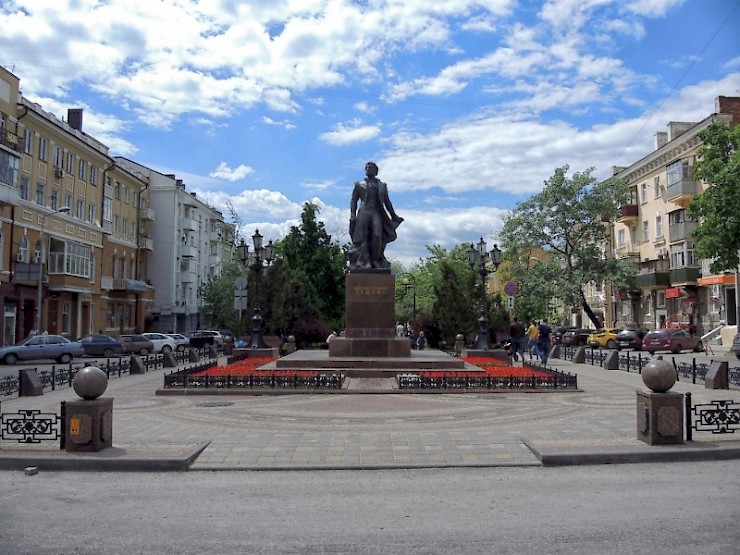
Very picturesque, wide, shady street is perfect for walks at any time of the year. The street began to actively build up in the first decade of the 20th century: merchants and wealthy artisans chose this area. Many mansions are still in good condition. The main attraction of the street is a monument to A.S. Pushkin: the poet has been to the city several times. In addition to historical buildings, Pushkinskaya Street has many cozy cafes and restaurants where you can relax, drink a cup of coffee and have a snack.
Cathedral of the Nativity of the Blessed Virgin Mary

In the mid-19th century, the population of Rostov was growing steadily. As a result, Emperor Nicholas I approved the draft for a new stone church instead of the old masonry temple with wooden domes that could not contain the crowds of worshippers.
The cathedral was built between 1854 to 1860 to Konstantin Ton's generic, or model design. As a result, the cathedral looks similar to other churches designed by Ton, such as the Cathedral of Christ the Saviour in Moscow, the demolished Presentation Church in St. Petersburg and the Cathedral of the Holy Ghost in Petrozavodsk. Alexander Kutepov was the architect in charge of construction works.
The funds for construction came from the rich merchant Konstantin Mikhailov-Nefedov. Another local merchant, Igor Panchenko, financed frescoes, icons, golden crosses for the domes, and the church fence.
In 1937 the cathedral was closed, and on its territory was opened a zoo, and the cathedral itself was used as warehouse. In the 1940s the upper tiers of the bell tower were destroyed.
The cathedral was opened again in 1942, when Rostov was occupied by German army. In 1950 the cathedral was redecorated and the old paintings were restored. In 1988 the interior redecoration was also done.
In 1999, on the 250th anniversary of the city of Rostov, the bell tower was restored in its original form.
Kumzhensky memorial

During the Great Patriotic War bloody battles were fought on the territory of the Kumzhensky Grove. The memorial complex "Kumzhenskaya Grove" was built in 1983 in memory of the soldiers who died in those battles. The authors of the complex were architect R. Muradyan, sculptors B. Lapko and E. Lapko. The memorial annually hosts mourning events in memory of the dead soldiers of the Soviet Army. The remains found from the Rostov search groups are interred in a mass grave.
Initially, the memorial complex was a museum. But in 2000 a restaurant was opened in the former museum. Journalists and public figures noted that the memorial needed improvement and repair. There was a significant amount of garbage on the territory of the memorial. In April 2012 public organizations of Rostov cleaned the area around the memorial complex, and collected more than 100 garbage bags of trash. At the same time one of the authors of the complex architect Ruben Muradyan, said: “Today the memorial lives full life, it is actual - I see it. Thanks to our search engines, in recent years, the heroes of the war have been buried in a common grave. There are new memorial plaques with the names of the heroes».
In 2015, in preparation for the 70th anniversary of the victory in the Great Patriotic War, the memorial complex was restored and landscaped. The illumination of the main stela of the complex, illumination of the alleys, video surveillance, and landscaping was done.
Theater Square - the heart of the city

The main city holidays are celebrated on Theater Square: thousands of people gather here during the celebrations. A high stage is established for the performance of creative groups and appeal to the townspeople of officials. On ordinary days, Theater Square is also crowded. Families with children come here, lovable couples meet here - everything is provided for pleasant walks. It was on Theater Square that the Ferris wheel was installed - the largest in southern Russia. There are many attractions on the square: a theater in the form of a tractor, a wall for liberating soldiers, a large fountain. Near the square there are two landscaped parks.
Memorial complex “Soldiers-liberators of the city of Rostov-on-Don”
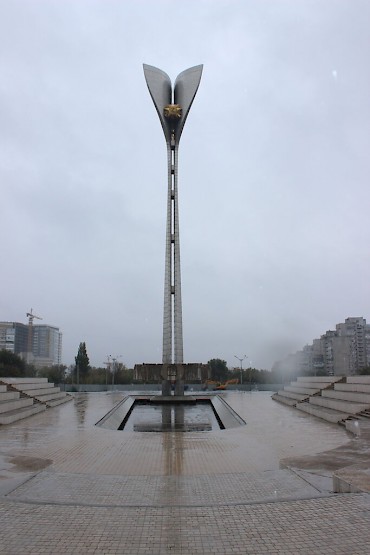
The real hallmark of the city is the memorial to the Soldiers-Liberators of Rostov-on-Don. The complex is located on Theater Square, it is one of the largest monuments of the country dedicated to the Great Patriotic War. The original sculptural composition consists of a 72-meter stele, concrete bas-relief and water stall. All year round, the Eternal Flame burns without fading. Newlyweds definitely come to the memorial complex to lay flowers and make memorable photographs. Each evening with the onset of darkness, illumination is turned on, which gives the memorial an even more solemn appearance.
Memorial Complex "In Memory of the Victims of Fascism"

The complex is located in the Zmievskaya beam. Here in 1942, almost 30 thousand people were shot by the Nazis. The memory of terrible events is immortalized in the memorial complex. The central object is the concrete sculptural ensemble "Victims of Execution." For many years, the metronome repels a rhythm that resembles a knock of hearts. You can get acquainted with the history in the memorial hall, which is located under the viewing platform. Pylons are installed along the broad Alley of Sorrow, on which you can read slogans-calls that inspire Soviet soldiers to feats.
Southern Federal University's botanical garden

Southern Federal University's botanical garden is located in the North-Western part in Rostov-on-Don,in the Temernik river valley. It's the first botanical garden in the vast territory of the treeless zone in the South of Russia. There is a mineral spring called St.Seraphim of Sarov on the territory of the garden,which is presented by the Directorate of the garden as an Orthodox shrine.
Margarita Chernova Mansion
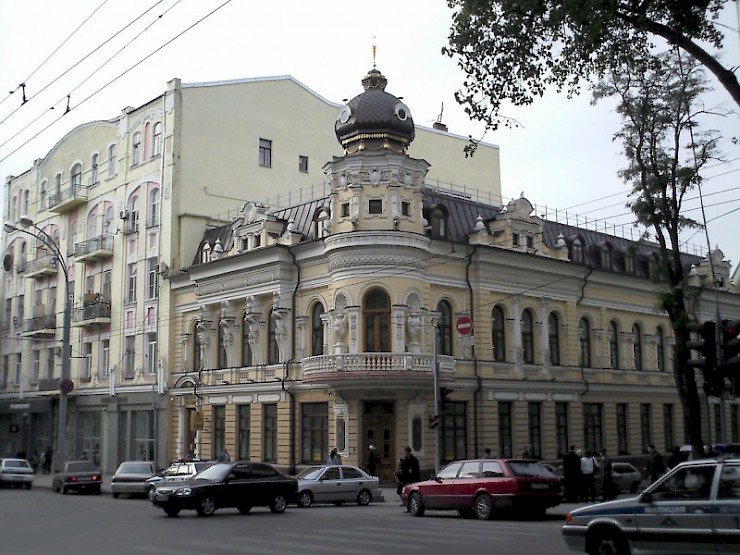
One of the most beautiful and most mysterious structures in Rostov-on-Don is the house of Margarita Chernova. The original mansion was built for his lover by a rich merchant Elpidifor Paramonov. The best architects worked on the project. The two-story house is characterized by special greatness: it is decorated with stucco, unusual platbands, luxurious decorative ornaments. Inside, the house resembled a theater where the mistress could always feel like a leading actor. During the years of Soviet power, the mansion was nationalized, and a theater workshop was located in its walls. In subsequent years, an archive, a pharmacy, and communal apartments were located here. Today, bank employees work in the famous Chernova mansion. The house is completely restored and pleases the eyes of passers-by with rich decoration and original architecture.
Gorky Central Park of Culture and Leisure
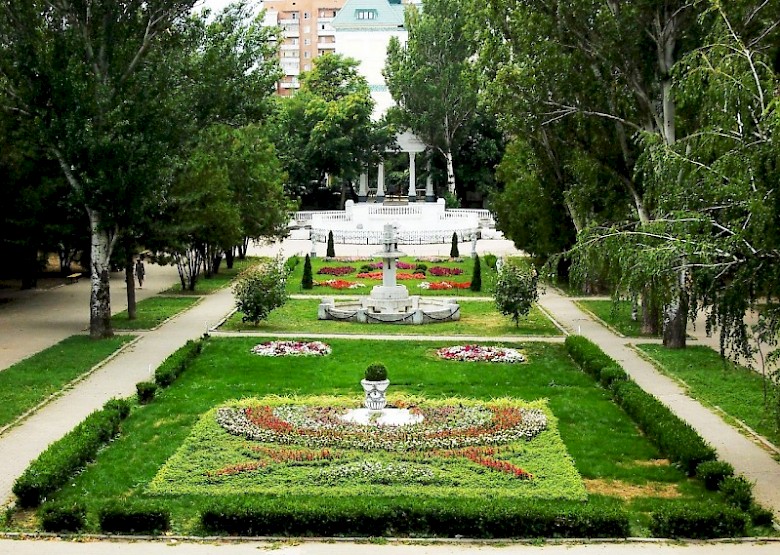
The park was established in arroyos, where dirty stream ran. Town dump occupied this place. Mayor of Rostov-on-Don Alexander Yashchenko owned the territory. He handed it to the city magistrate. Different private organizations improved the territory. The first trees, shrubs, and plants were transplanted to the park. There were several gardens initially, which were combined into the new urban park. The so-called Lower Park (Nizhny Park) and Upper Park (Verhny Park) has been formed through the terrain.
A wooden building of the first Municipal Theatre opened in the northern side of the park in the 1840s. Wooden rotunda to relax of citizens was erected in 1864. It was replaced by stone building located on Pushkinskaya street alongside of main park entrance in 1893. Architect Nikolai Doroshenko designed an open-work fence and front entrance constructed in the shape of fortress gates. New entrance was located on Bolshaya Sadovaya street. Architect Vladimir Shkitko projected the first fountain in Rostov-on-Don called 'Boy with basin'. The opening ceremony was held in conjunction with relocation of the town council to new building (Maximov house). The fountain was officially opened by projector of water pipe Timofey Petrovich Kuska. Pool and arbors were decorated with sculptures opened in middle porch of the park. At the Lower Park was a stone grotto, reservoir with alive swans and fountains. Flower ornaments were regularly renovated. A large area of new exotic plants and flowers was laid out. Palm trees and tamarisks were brought from abroad.
Chernova House

A mansion in the city of Rostov-on-Don, Russia. It was built in 1899 by architect N.A. Doroshenko. It is considered to be an object of cultural heritage of regional importance.
Rostov Regional Museum of Fine Arts

Almost 6 thousand works of painting, sculpture, graphics and objects of decorative and applied craftsmanship are stored in the funds of the museum. The permanent exhibition presents ancient Russian art. Some exhibitions are devoted to the art of Russia and the works of Western European masters. Educational classes and lectures are held on the basis of the museum. The exhibition is visited annually by several thousand tourists from different cities.
Museum of North Caucasus Railway

The first museum of history of North Caucasus Railway opened on 4 November 1960 in a Community Center of railwaymen at Rostov-Glavny station. Permanent exposition includes: information boards about famous North Caucasus railwaymen, model trains on a scale 1:15, uniform, cases, panoramas, implements of various times. The exhibition covers the period from emergence of rail transport in the region up to the present moment. The various collections from the Russian Civil War and the Great Patriotic War, now exceed 12,000 objects in the main fund
Rostov Regional Museum of Local History

The museum's wide fame is explained by a unique collection of exhibits: the rarest archaeological finds are stored here. The real pride of the exhibition is the exhibition "Treasures of the Don Steppes," which presents more than 2 thousand items made of silver and gold. The oldest exhibits date back to the 4th century BC. The Museum of Local Lore studies in detail the issues of history, culture, nature of the Rostov region. On the basis of the museum, lectures and training events are constantly held related to important dates in the history of the region and the country.
Maxim Gorky Rostov-on-Don Drama Theatre
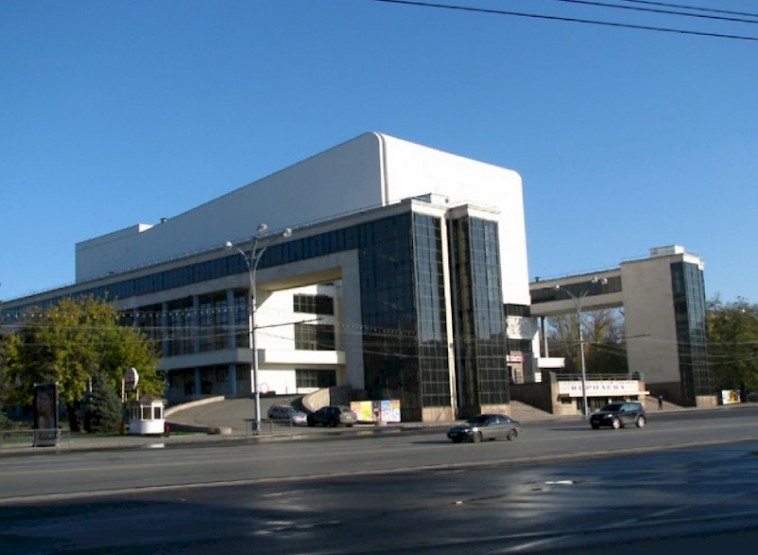
The first professional troupe was created in Rostov-on-Don in the middle of the 19th century. The first production on the stage of the present, from scratch built theater was presented to the audience in 1935. Even with the outbreak of war, the theater did not stop working, but during the retreat, the Nazis blew up the building, and for many years the artists had to perform in the philharmonic room. The troupe received its own building in 1963, because of the unusual shape, the structure was immediately called the "tractor." There are three stage venues of different capacities, an art cafe and an art gallery, where the works of modern artists and sculptors are presented.
Holy Cross Church, Rostov-on-Don (Surp Khach Church)

Iversky Convent

There is a legend that the monastery was built by a rich merchant, whose daughter decided to leave worldly life and become a novice. The foundation date of the monastery is considered 1903. During the First World War, orphans were found in the walls of the monastery, who were brought here from occupied Poland. In the 1920s, the monastery was abolished, and an orphanage, a house, a village club, warehouses and workshops were placed on its territory. The revival of the monastery began after the collapse of the USSR: cells were rebuilt, the source was cleaned, a font was installed. Restoration artists artistically painted the walls. Today, 35 novices constantly live here, excursions are held for tourists.
Monument "Tachanka-Rostovchanka"

At the southern entrance to Rostov-on-Don there is a monument famous throughout the country - Tachanka-Rostovchanka, opened in 1977. The tachanka is a spring carriage on which the machine gun is mounted. Harnessed by horses, the car became one of the main symbols of the Civil War. It is no coincidence that the place for the monument was chosen: it was here, on the left bank of the Don, that Budyonny's
soldiers fought with Denikin's army. The height of the sculptural composition is 15 meters: a tachanka drawn by four horses with two Budennovites races along a wide Kuban steppe.
Rostov-on-Don Zoo

The zoo covers an area of 57 hectares. Today, about 5 thousand diverse representatives of the fauna live here, and almost all species of animals and birds annually bring offspring. The zoo is divided into large thematic sections, each of which has its own plot. Aviaries, sunbeds, cages - everything is located outdoors. From predators you can see bears, tigers, leopards, pumas. The smallest visitors are delighted with giraffes, kangaroos, chimpanzees and monkeys. No one remains indifferent at the sight of graceful pink flamingos. The aquaterrarium with turtles, snakes and crocodiles deserves special attention. On weekends, shows with the participation of animals are held at the zoo.
 EN
EN RU
RU